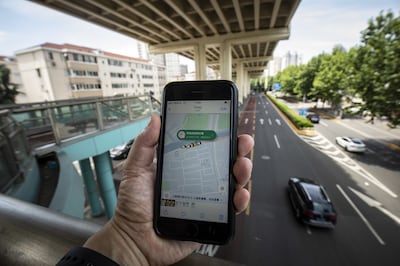The transition to electric cars continues apace, with sales forecast to more than triple by 2025, even as customers pay a premium for battery-powered vehicles.
But what about prospects for moving drivers into shared vehicles, rather than owning their own cars, as the decade progresses?
The shift is happening fast, a recent study by the Oliver Wyman Forum and the Institute of Transportation Studies at the University of California, Berkeley found.
The report is bullish even after public transport — the most efficient way to a achieve a greener future — has been badly affected by the Covid-19 pandemic, which prompted people to ditch trains and buses in favour of private vehicles.
Mobility services including car, bike and scooter sharing, vehicle subscriptions and ride-hailing could grow 10 per cent a year for the rest of the decade, compared with 5 per cent for the broader transport sector, the study found.
Revenue from these services, which also include charging and navigation apps, could grow to $660 billion in 2030, a massive jump from $260bn in 2020.
“By the end of the decade, more apps, shared services and electrification will significantly expand mobility’s scope and modes,” the authors of the report wrote.
The shifts are being driven by both regulation and consumer demand. Cities are leading the surge by restricting usage of older vehicles, which is progressing in some regions to an outright ban on cars powered by petrol and diesel engines.
And consumers are more open to digital, on-demand and cheaper services. More than half of respondents in the Oliver Wyman study said affordability was a key factor in their transport mode selection.
The trend also differs from region to region, depending on the availability of mass transit, traditional ways of getting around and population density.
In North America, where cars are typically preferred due to spread-out cities and lack of public transport, there’s natural demand for ride-hailing services.
Mass transit in Europe, on the other hand, is highly developed. The pandemic severely strained mobility in the region, with car-sharing replacing public transport for some people, the study found.

In Asia, car renting and sharing is expected to grow rapidly, with industrialisation and urbanisation in developing countries stimulating demand. India and Malaysia are the largest markets in the region for car subscription.
But two major markets — China and Japan — may be restricted in their growth due to the social status attached to car ownership and insurance costs.
Consumers’ mobility demands are evolving in seemingly contradictory ways, the report found.
On one hand, people want inexpensive options, but on the other, the pandemic accelerated a shift away from mass transit, which is the cheapest service available.





